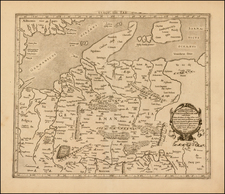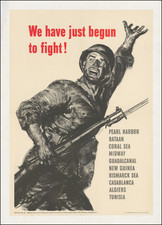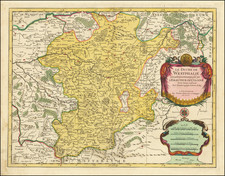Contemporary Luftwaffe Command Record of the Allied Bombing of Berlin.
A fascinating and historically valuable archive consisting of a detailed type-written list marking the exact dates, times, and locations of the bombs that fell on Berlin during World War II.
The chronicle of the systematic destruction of Berlin during the WW II meticulously lists 161 different events from the night of June 25-26, 1940 (the first large scale allied raid) until December 12, 1943. From December 1943 until the end of the war, in May 1945, the chronicle becomes more cursory and less detailed, likely owing to the fact that during the Air Battle of Berlin (November 1943 to March 1944), the Allied air raids upon the city were so frequent and numerous that it was impossible to keep count.
The districts of Berlin, which were especially targeted by the bombers are listed: "Friedenau, Steglitz" (1.3.1943), "Büsingstrasse 5, Freid., Stegl., Lankwitz, Südende" (23.8.1943), "Spandau "(31.8.1943). The duds are also recorded and partly noted on the corresponding sheets: "5 Blindg. Fröauf- and Kaiserallee" (18.11.1943), "1st major terror attack downtown Charl. Wilmersdorf, north" (22.11.1943), "2nd major Terror attack downtown, Charl., Wilm., (Bridge Kaiserplatz) "(22.11.1943),"station Feuerbachstr." (26.11.1943), "Dahlem, Institute, Mahlow" (1.12.1943), "Staatsbibl., University, Niederschönweide, Köpenick, Neukölln, Lichtenrade, Mariendorf, Grünau, Mahlow, Neukölln, Gatow, Kladow, Kaiserplatz ..."
Shifting Strategies in Allied Bombing of Germany: Butt Report, Dehousing Paper, and the Area Bombing Directive
The archive shows the effects of the Butt report of 1941 and the March 1942 "Dehousing" paper on RAF bombing strategy.
D. M. Bensusan-Butt, a member of the War Cabinet Secretariat, delivered a report in 1941 that showed that only 5% of bombers setting out from the UK managed to bomb within five miles of their target. This report formed part of a larger swell of criticism against RAF bomber effectiveness during 1941. Allied bombings were frequent but not everyday occurrences, and the damage was largely limited to isolated strikes, as opposed to the mass destruction of large areas. This all changed late in 1943, when the British and Commonwealth air forces, led by Air Marshal Arthur “Bomber” Harris, mounted the first direct large-scale air strikes on Berlin.
In 1943, the list of bombings notes "Terrorangriff" (Terror attack) and "Grossangr." (Large attack) with frequency, whereas beforehand it is not mentioned at all.
Known as the Air Battle of Berlin, this series of massive air raids commenced on the night of November 18-19, 1943 and lasting until March 1944, with the Allies launching almost ceaseless series aerial attacks on Berlin, featuring around 800 bomber craft per night. The aim was to paralyze the nucleus of the Nazi regime and demoralize the citizens of Berlin. While much carnage was unleashed, and certainly the Nazi war effort suffered, the Allies’ Berlin Campaign is generally thought to have been a failure, as it did not significantly weaken the operations of the Nazi high command, nor did it immobilize the city. Moreover, the Allies’ losses in both aircraft and manpower were astounding and it has been argued that such resources should have been better allocated elsewhere. In response, the Nazis embarked upon ‘Operation Steinbock’, a reprisal air war against London. That being said, Berlin was irrevocably altered, as many of its most famous monuments were severely damaged or destroyed. Detailed, quantitative, eyewitness chronicles of bombing raids, especially taken over a number of years, are very rare, and this archive provides precious insights into the frightful environment of World War II Berlin.











![(Second World War - Balkans) Karte von Südosteuropa [Map of Southeastern Europe]](https://storage.googleapis.com/raremaps/img/small/90544.jpg)

![(Second World War - Oilfields) Vorderasien mit seinen Erdölgebieten [Western Asia with Its Oil Fields]](https://storage.googleapis.com/raremaps/img/small/87373.jpg)


